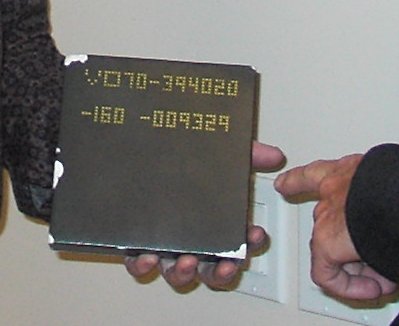I thought Apollo 13 didn't have escape pods. It was made up of three areas: The command module (the pod they returned in), the Lunar Exursion Module (aka the LEM) and the engine. The engine was damaged during the cyro stir and cut down a lot of their power. Thus, the astronauts were forced to abandon the command module and use the LEM as a lifeboat, as it used less energy to run. As well, NASA didn't want to run the command module to much, as they weren't sure if it had been damaged and wanted to save energy for reentry and course correction burns.
I wanted to ask you if you think intersteller travel for humans to other star systems would ever be possible in the distant future? Also, along the same lines, do you think it will ever be possible for humans to live independently and indefinitely in space?
I ask these questions because we know that in 500 million years, it may not be possible to live on Earth itself do to changes in the sun.
I don't even think the earth will sustain humans that long (500 millions years). There are too many problems, global warming, nuclear war...we may just destroy ourselves.
Okay, but is interstellar travel possible? I think the first question is: is it affordable? I personally think that we could have reached Mars by now, if NASA had had the interest and funding. After John Kennedy made his promise to beat the Russians to the moon, America acheived that goal in just under 10 years. However, NASA - and the entire space business has taken some draaaaastic pay cuts the past few years.
So, first they'd have to develop the technology. Then they'd have to find a stellar system capable of supporting life. They've discovered a few alternate systems, but no one is quite sure how stable they are, planet composition, etc etc etc. These things are too far away to even observe...everything looks like a giant star even through satellite images.
The problem is that other systems are so far away. I mean, I think it takes 10 years alone to reach Pluto. So they'd either have to devise a ship with resources that could sustain people that long, or else find a faster way to travel. Light speed? Perhaps. But we don't have the technology to do that...yet.
I think one day humans WILL be able to live outside of earth...mars, the moon, etc. A moon circling Jupiter was found to have water. So who knows? I think, that in 500 million years, they will have developed this technology.
Look how far we've come in just over 50 years. 1950-present. A lunar landing. The space shuttle. The international space station. Satellites. Technology is booming. It's too early to tell what will happen 500 million years from now. I would like to think that yes, it will be possible. Although I think that living on alternate planets would be the last resort..I can envision attempting to save earth a larger priority. But who knows? When the need comes, we'll see (well, maybe) where all this technology has taken us.
To infinity and beyond!
Khanda...what's a track program? Hey...could you ask your dad about how tech. has advanced on the spacecrafts since the Apollo missions? I'd love to hear an 'insider's' opinion on all this.







